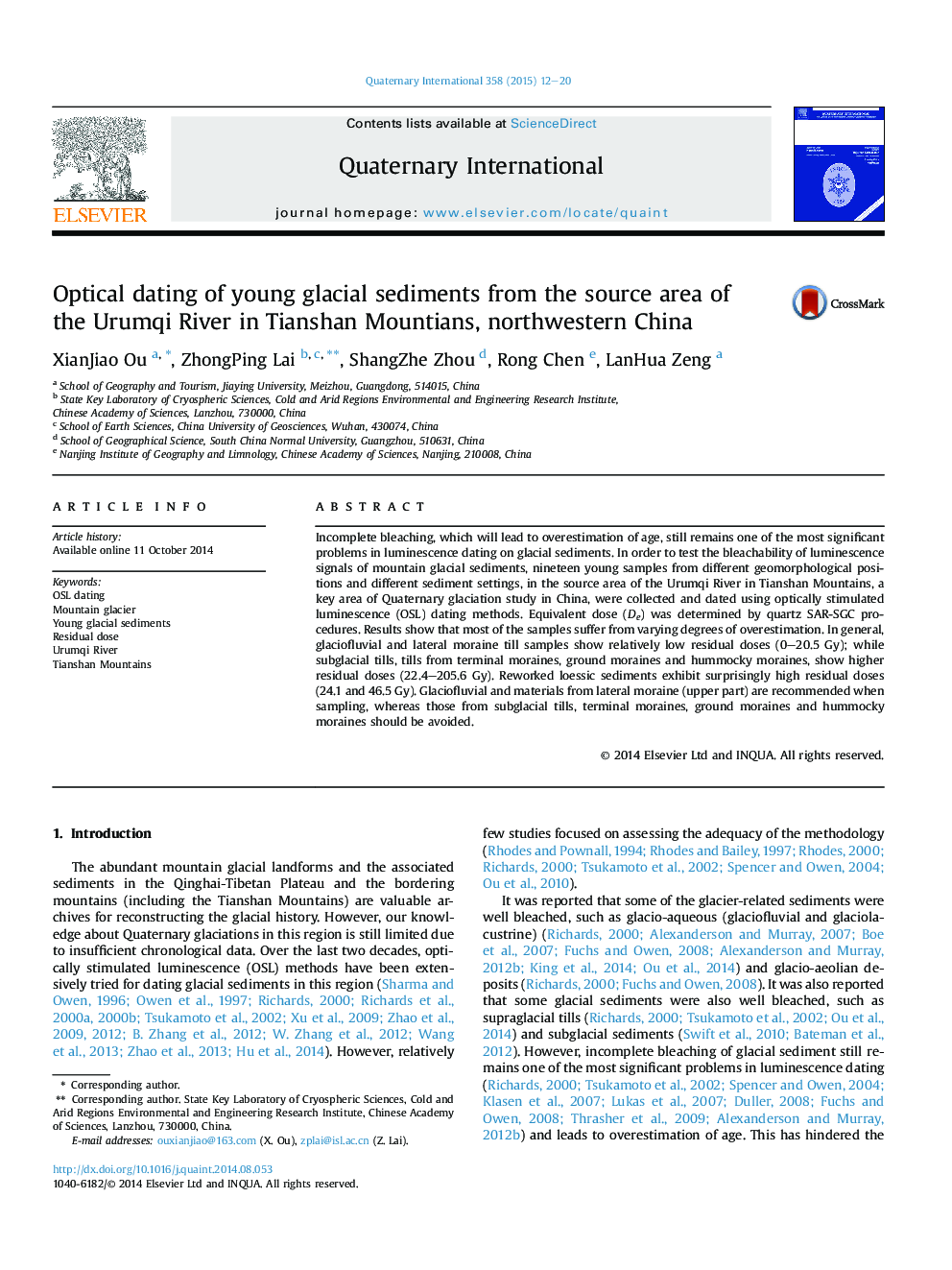| Article ID | Journal | Published Year | Pages | File Type |
|---|---|---|---|---|
| 1041012 | Quaternary International | 2015 | 9 Pages |
Incomplete bleaching, which will lead to overestimation of age, still remains one of the most significant problems in luminescence dating on glacial sediments. In order to test the bleachability of luminescence signals of mountain glacial sediments, nineteen young samples from different geomorphological positions and different sediment settings, in the source area of the Urumqi River in Tianshan Mountains, a key area of Quaternary glaciation study in China, were collected and dated using optically stimulated luminescence (OSL) dating methods. Equivalent dose (De) was determined by quartz SAR-SGC procedures. Results show that most of the samples suffer from varying degrees of overestimation. In general, glaciofluvial and lateral moraine till samples show relatively low residual doses (0–20.5 Gy); while subglacial tills, tills from terminal moraines, ground moraines and hummocky moraines, show higher residual doses (22.4–205.6 Gy). Reworked loessic sediments exhibit surprisingly high residual doses (24.1 and 46.5 Gy). Glaciofluvial and materials from lateral moraine (upper part) are recommended when sampling, whereas those from subglacial tills, terminal moraines, ground moraines and hummocky moraines should be avoided.
